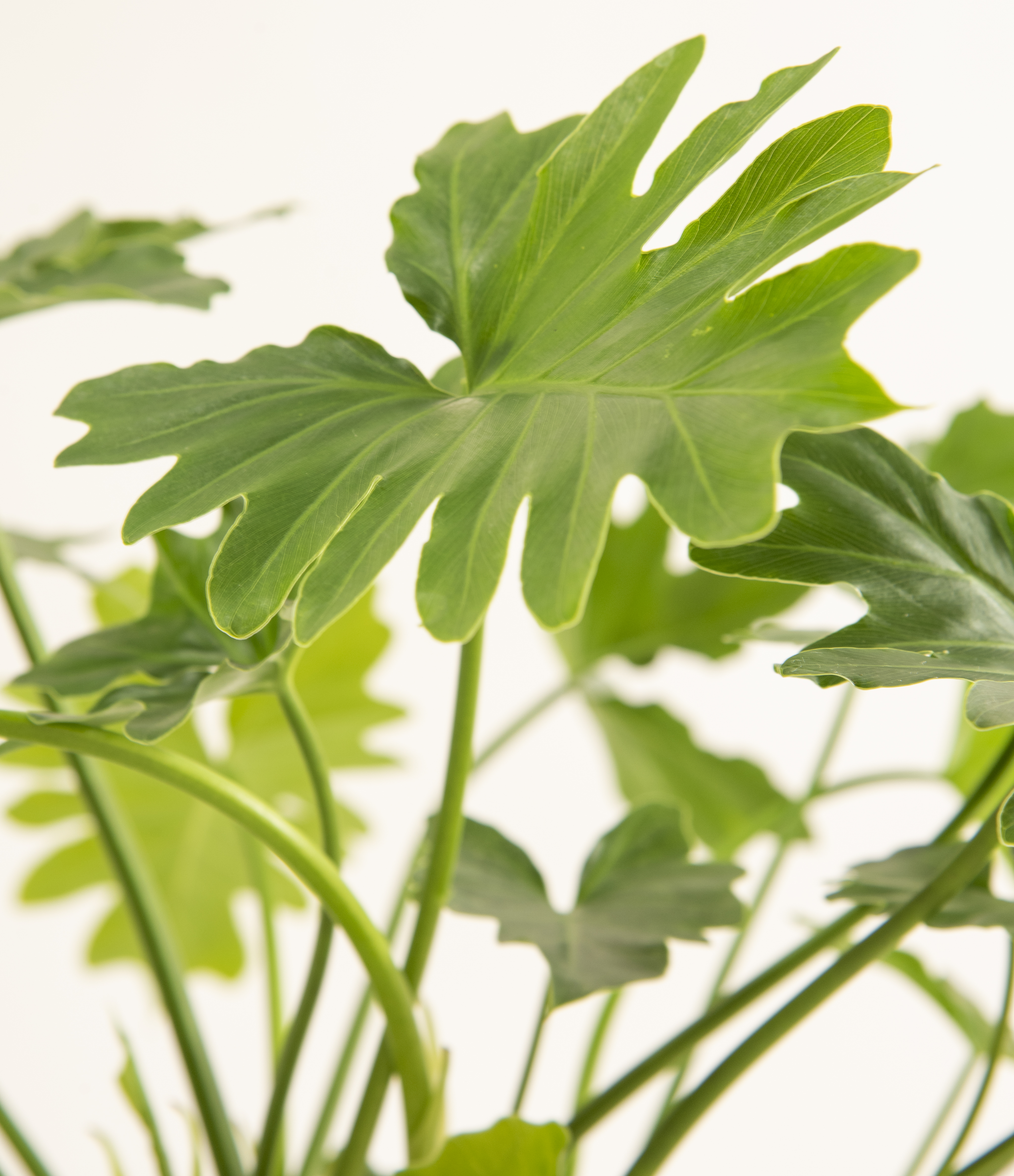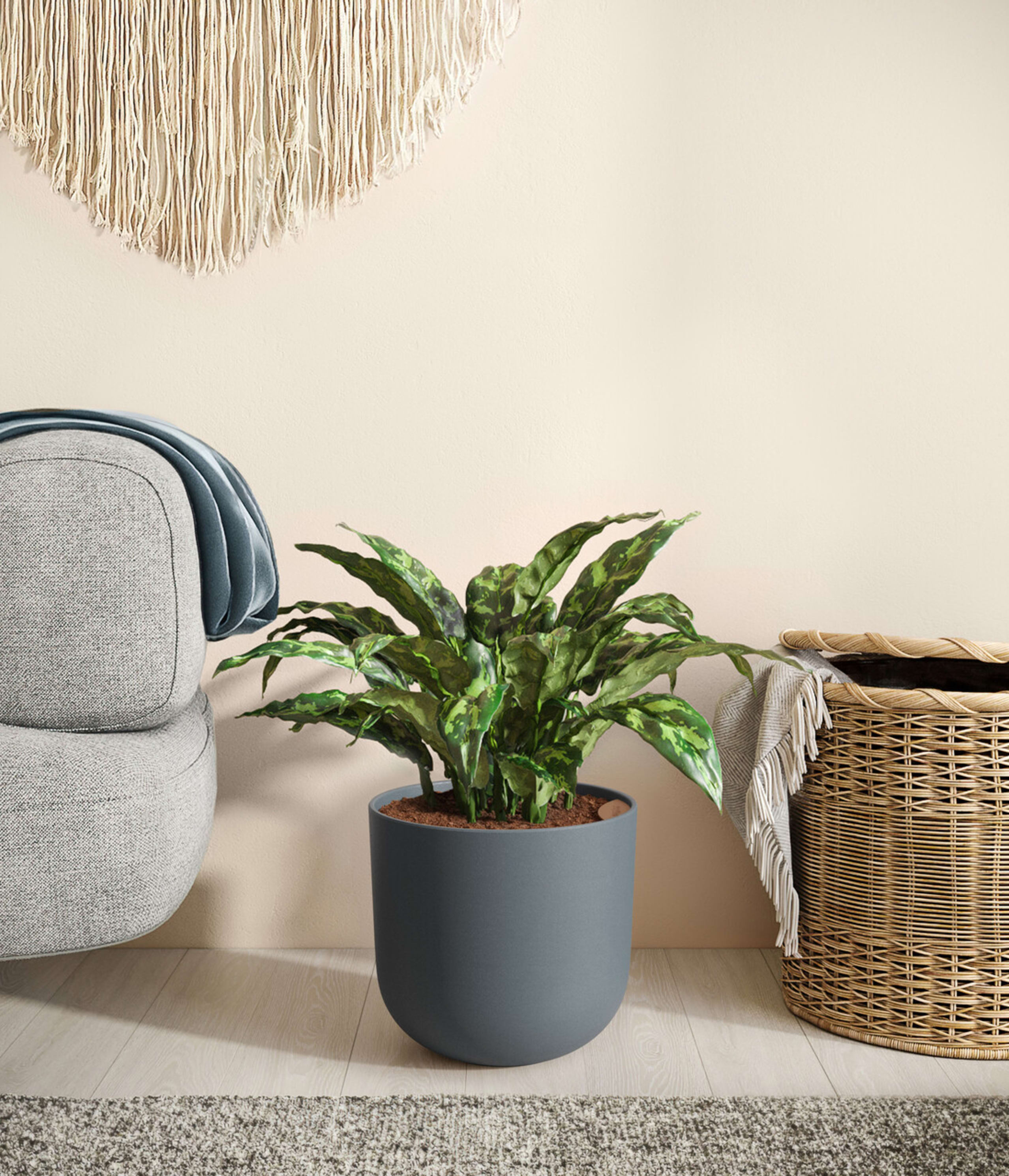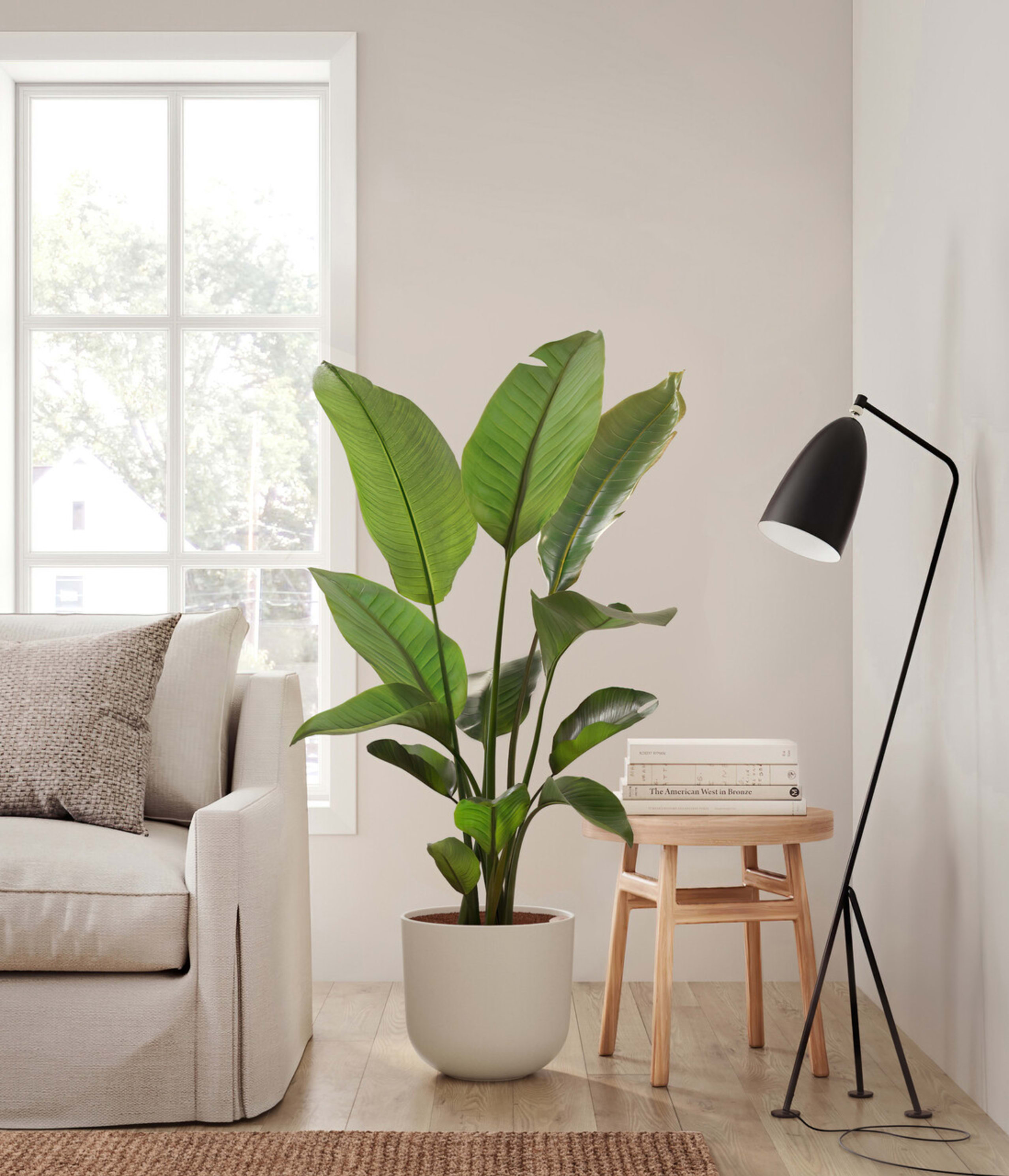Plant care library / Shangri La Philodendron
How to care for Shangri La Philodendron
About Shangri La Philodendron
The idyllic Shangri-La Philodendron is as easy to care for as it is easy on the eyes. In its native home of South America, its plentiful gentle yet wild branches adorn the tropical rainforests of Bolivia, Brazil, Argentina, and Paraguay, where indigenous cultures have upheld it for centuries as a plant medicine.
Other common names
- Split-leaf Philodendron
- Lace Tree
- Horsehead Philodendron
- Philodendron bipinnatifidum
How Often Should I Water My Shangri La Philodendron?
Ensure your Split-leaf Philodendron thrives by keeping it on a steady watering schedule. Easyplant makes watering simple. All you have to do is check the easyplant reservoir once a month and fill it when empty, and you're all set!
If you don't have an easyplant to make watering hassle-free, manually water your Shangri-La Philodendron only when the top two inches of the soil are dry. Check the soil before watering. Note that the frequency of watering will change from season to season. Most plants go dormant in the winter, so they require less watering.
Shangri La Philodendron Light Needs
Shangri-La Philodendron grows best in a well lit space with bright direct or indirect sunlight, and can adapt to spaces with medium to low light, where the source of light is further away. Avoid placing it in spaces without natural sunlight.
Ideal places in the home to put this plant are by south or west-facing windows. Be sure they are a few feet from the window or that a sheer curtain or open blinds diffuse the light. Be aware that Shangri-La Philodendron's leaves can burn if left in harsh direct light.
Shangri La Philodendron Plant Care
During your Shangri-La Philodendron's first few days at home, one or two leaves might turn yellow or fall off. This is a normal part of adjustment and is no cause for concern. Once adjusted, Shangri-La Philodendron is very easy to care for and will reward your love for it by quickly bouncing back. To help it grow optimally and evenly, occasionally dust the leaves and rotate the pot by a ¼ turn once a month.
How Big Do Shangri La Philodendron Plants Grow?
The Shangri la philodendron can grow three to four feet wide and two to three feet tall. This lush, bushy plant grows like a shrub, not like a vine, so support is unnecessary for it to grow. Instead, it becomes dense with large green leaves that grow on sturdy stems. The lobed leaves can grow up to two feet long when the plant matures.
It takes five years for this particular variant of Philodendron to reach maturity. Many factors affect this plant's growth, including proper lighting, a specialized watering schedule, sustainable temperatures, and more.
Temperature & Humidity
The ideal temperature for your Shangri-La Philodendron is between 60-75˚F (16-24˚C). Never expose the plant to any temperature less than 50˚F (10˚C). Once the temperature drops below this threshold, growth will stall.
Since the Split-leaf Philodendron is a tropical plant, it thrives in warm, humid climates. While it can adapt to humidity levels between 30-50%, it prefers humidity above 50%.
To create a humid environment for your plant, try placing a tray of water near the plant or using a humidifier. You can also group it with other plants or place it in a bathroom or kitchen where there is naturally higher humidity.
Are Philodendron Shangri La Plants Toxic for Pets & Kids?
Some plants add a pleasing aesthetic to the home and can adapt well to the indoor environment but are unsafe to keep in the house. When considering a houseplant, it's important to know if anything toxic about the plant could harm children or animals if touched or ingested.
Shangri-La Philodendron may be moderately toxic if ingested, so be sure to keep it away from curious children and pets. This plant contains insoluble calcium oxalate crystals, which, if ingested, can cause mouth and GI tract irritation, and ingestion can result in throat irritation and ulcers in the throat.
The plant is equally toxic to both dogs and cats. Symptoms you'll notice in your pets if they have eaten the plant are pawing at the mouth, drooling, decreased appetite, oral pain, and vomiting. On very rare occasions, swelling of the upper airway can occur, making it difficult to breathe.
Troubleshooting Common Problems with Philodendron Shangri La
Part of plant care is observing how your plant is fairing in its environment, so you can make adjustments if needed. Every houseplant will have different signs or tells when they aren't doing well. Here are a few things to look out for with the Shangri-La Philodendron and how to fix the issue.
If multiple leaves turn pale or yellow, relocate the pot to a less brightly lit area. If leaves are dropping or curling inward, this is a sign that the plant needs water. Increase the watering frequency, but be sure to check the soil first. If the first two inches are dry, watering is a go.
Fungus gnats or a foul odor coming from your plant could indicate a fungal infection or root rot. These issues are a result of overwatering. Decrease the cadence of watering, allow your plant to dry out, and treat the fungal infection with neem oil or a fungicide.
If you notice corroded leaf surfaces or twisted leaves, you might have pests on your plant, like aphids, thrips, scales, and spider mites. Use neem oil or an insecticide soap on your plant until the problem is solved. Check your plant regularly to avoid this issue in the future.
Frequently Asked Questions about Shangri La Philodendron Plant
- What is Philodendron Shangri La?Philodendron Shangri La is a new tropical compact philodendron genus with split-leaf foliage. Native to South America, this plant, unlike other Philos, is a mounding Philodendron, which means it doesn't produce vines, but growth stems from its center.
- Is Philodendron Shangri La the Same as Selloum?No, the Philodendron Shangri La and the Selloum are not the same. The Philodendron Shangri La has a heart-shaped leaf and is compact and shrub-like, while the Selloum has larger oblong leaves and is larger and more sprawling.
- How Often Should I Water Shangri La?You should water the Shangri La whenever the top two inches of soil are dry. Always check the soil before watering. If the soil is dry, water the plant thoroughly and evenly. If the soil is still wet, wait a day and check again.

 Small Plants
Small Plants Medium Plants
Medium Plants Plants Collections
Plants Collections Large Plants
Large Plants Huge Plants
Huge Plants